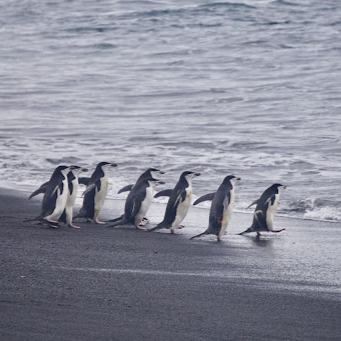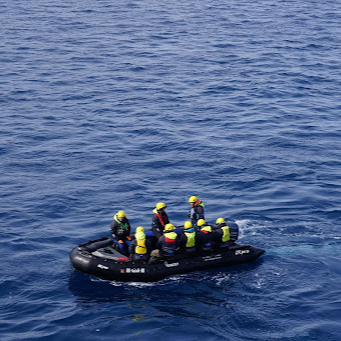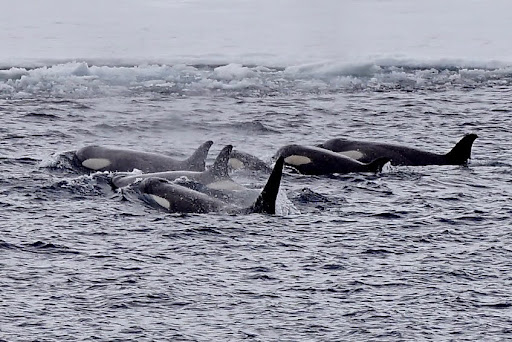Visiting Antarctica on a Budget?!
- Lauren Papierski
- Jul 23
- 6 min read
Yes. It’s Possible, and Here’s How

Why is Antarctica Expensive?
Logistical Challenges
Transportation Costs: Reaching Antarctica requires specialized ships or aircraft, both of which are expensive to operate. Ships must navigate through ice-covered waters, often requiring icebreakers. Airplanes can only land on specific ice-runways or research stations, and flights are limited to certain times of the year.
Limited Access: There are only a few points of access to Antarctica, typically through New Zealand, Argentina, Chile, or Australia. This makes transport to and from the continent costly and time-sensitive, especially since travel is only possible during the summer months (November to February).
Shipping Supplies: All necessary supplies—food, fuel, equipment—must be brought in from elsewhere, often requiring long transport times and special handling.
Limited Tourist Capacity
Low Capacity, High Cost: The continent is off-limits to mass tourism, and those who do visit typically pay a premium for the experience, which involves small-group tours by boat or specialized flights. The limited number of tourists means the cost per person is significantly higher.
Exclusive Access: Luxury cruises or expedition trips are often the only way to visit, with high costs associated with specialized vessels that can navigate icy waters and provide safety in such a remote region.
Short Operational Window: The harsh winter conditions make Antarctica inaccessible for much of the year. This means most activities, from tourism to research, must be compressed into a short summer window.
Security and Insurance
Risk of Accidents: Given the dangerous environment, insurance premiums for any activities in Antarctica are higher. Accidents in such a remote location also pose significant financial risks, as evacuation and rescue operations are difficult and costly.
Emergency Services: In the event of an emergency, evacuations are complex, expensive, and may require international coordination.

Ways to Travel to Antarctica on a Budget
Consider Overland Travel to Ushuaia, Argentina:
Ushuaia is the main gateway to Antarctica and travelers can reach it cheaply via bus, train, or flight from major Argentine cities.
Cheaper Cruise Options:
There are more budget-friendly cruise lines that travel to Antarctica (e.g., some smaller, less luxurious options). Shorter trips will always cost less as well.
Sometimes the longer you wait to book, the better deals you can get as well. When I was planning my trip, I waited until later in the year, June/July for a November trip and it was 60% off the original price. This is because a lot of agencies buy spots ahead of time and need to fill them.
I have also talked to people who flew to Ushuaia first and then purchased cruise packages a couple days before embarking, for ¼ of the cost as the agency or cruise line needed to fill spots on the ship
Fly-Cruise Packages:
It is possible to fly directly from Punta Arenas (Chile) to King George Island to avoid expensive long cruises and still visit Antarctica. This can not only reduce budget but also cut down the number of days needed to get to Antarctica
Other Tips for Cutting Costs
Travel with a Group: Group tours or multi-person bookings have benefits for cost-sharing on things like transportation, accommodation, and tour packages. Many times booking a 2 or 3 person cabin is much less expensive than a single cabin if you are traveling alone. I booked a 2 person cabin as a single and had a random roommate and that cut costs almost in half
Choose a Shorter Trip: Shorter cruises or alternative options like day trips to the Antarctic Peninsula rather than full-length expeditions can be less expensive and worth looking into, depending on the experience you are looking for. I looked into this as well but the number of days that you actually spend on the peninsula can be small and you may not be able to see everything you’d like.
Avoid Expensive Add-ons: Add-ons can be expensive and may not be entirely necessary depending on the experience you’re looking for - some of the “add on” excursions like camping, kayaking, snowshoeing, etc. can be very expensive and won’t necessarily give you more time off the boat.
Pack Smart and Save on Gear: Avoid renting pricey gear and instead pack smart with affordable cold-weather gear (with layering and multifunctional pieces).

What to Look for When Choosing a Cruise Package
When evaluating different Antarctic cruise packages, it’s important to consider a few key factors to ensure you select the right experience. First, check the itinerary and duration—some cruises may focus on specific regions like the Antarctic Peninsula, South Georgia, or the Falkland Islands, while others offer a more comprehensive route.
Next, assess the ship size and amenities; smaller ships often provide a more intimate and flexible experience, allowing for easier access to remote areas, but larger ships might offer more luxurious accommodations and onboard services. Pay attention to the guide-to-passenger ratio, as expert naturalist guides and lecturers will enhance your understanding of the region's wildlife, history, and environment.
I chose a smaller ship that was less on the luxury side, to both save money but also because I wanted a more “adventure filled” experience. Think about the expedition style—whether you prefer active excursions like kayaking, hiking, or polar plunging, or more relaxed exploration via zodiac boat trips and scenic cruising. I personally wanted more excursions and time exploring off the ship, so the package I chose offered at least 2 excursions a day all of which would be fairly active and at a higher “adventure level.” Some of the more luxury ships, have an older demographic, and had less excursion time off the boat, and are more expensive, so I decided not to take that route. By considering these factors, you can tailor your Antarctic cruise to match your interests and adventure level.
Essential Packing Tips for Budget Travelers
Gear Recommendations: It will be easier to find better deals on clothing elsewhere and to pack it and bring it with you - It gets pretty cold out there, and you’ll want some good, warm clothing even just for the outdoor deck of the ship. You’ll want many layers for the excursions as you’ll be away from the ship for about an hour or two as well. Here’s a list of what you might want to bring along.
Base Layer (moisture-wicking)
Thermal underwear (top and bottom)
Moisture-wicking socks (several pairs, wool or synthetic)
Thermal leggings (optional)
Long-sleeve shirts (preferably merino wool or synthetic)
Underwear (moisture-wicking)
Mid Layer (Insulation)
Fleece jacket or sweater (warm and breathable)
Down or synthetic insulation jacket (lightweight but warm)
Outer Layer (Wind and Waterproof)
Waterproof, windproof, and breathable jacket (with a hood)
Waterproof pants (to protect from wind and snow) - These are important for your excursions as you could get wet either on the boat, getting off the boat, etc.
Balaclava or Scarf (for snow and moisture protection and protecting face from the wind - the wind can be brutal at times!)
Warm hat (preferably fleece or wool)
Balaclava or neck gaiter (to protect face from wind)
Warm gloves (insulated and waterproof)
Liner gloves (to wear under heavier gloves for dexterity)
Sunglasses (high UV protection) - when it’s sunny, it’s really sunny and the reflection of the sun off the snow can be blinding!
Footwear
Boots - for sanitation purposes to keep the environment “untouched” the ship provides rubber boots for everyone to put on before leaving and arriving back on the boat, so these would be for the viewing deck outside on the ship
Wool or synthetic socks (several pairs, warm and moisture-wicking) - these are important as the rubber boots they provide are not always very warm, so insulated socks will be a game changer
Boot liners (optional for added warmth) - these could also be helpful to keep your feet warm on excursions
Others:
Camera and lenses (with protection for cold weather)
Extra batteries (cold can drain batteries quickly) - my batteries died fairly quickly, so you will want to make sure you have a few backups and charge them often
Waterproof phone case (for phones or electronics) - with the rough waters, its easy for your phone to get wet on excursions so a waterproof phone case
Daypack (waterproof, small enough for excursions)
Binoculars (if you're interested in wildlife viewing) - these will come in handy as even some wildlife that is close to the ship can be tough to see, binoculars or a zoom lens camera can help you see everything in more detail




















Comments